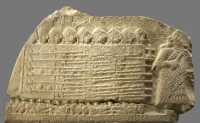Amritsar, also known as Rāmdāspur and Ambarsar, is the second-largest city in Punjab, India. Situated in the Majha region, it serves as a significant cultural, transportation, and economic hub. It is the administrative center for the Amritsar district. Geographically, it is located 217 km northwest of Chandigarh and 455 km northwest of New Delhi. Its proximity to the India-Pakistan border, being 28 km away, and its location 47 km northeast of Lahore, Pakistan, also contribute to its importance.
1914: World War I unrest
During World War I (1914–18) there was considerable social unrest in Punjab, particularly among the Sikhs.
January 1915: Gandhi returned to India
In January 1915, Mahatma Gandhi returned to India after a period of struggle against the British in South Africa to work for change.
April 1916: Home Rule League established
On April 11, 1916, Annie Besant established the Home Rule League with the goal of autonomy for India.
December 1916: Indian National Congress resolution
In December 1916, the Indian National Congress passed a resolution asking the king to issue a proclamation announcing the aim of British policy to confer self-government on India at an early date.
April 1919: Jallianwala Bagh massacre
In April 1919, the Jallianwala Bagh massacre occurred in Amritsar, resulting in the killings of hundreds of Indian civilians on the orders of British Colonel Reginald Edward Harry Dyer.
April 1919: Arrest of Satya Pal and Saifuddin Kitchlew
On April 10, 1919, Satya Pal and Saifuddin Kitchlew were arrested, leading to a general strike and a protest march in Amritsar that resulted in British colonial forces firing upon the crowd.
1933: Death of Annie Besant
Annie Besant, head of the Theosophical Society of India and who had established the Home Rule League in April 1916, passed away in 1933.
November 1947: Weather records date back to 1947
Weather records for Amritsar at the civil aerodrome at Rajasansi date back to November 15, 1947.
1948: Death of Mahatma Gandhi
Mahatma Gandhi, who after a period of struggle as a young man against the British in South Africa had returned to India in January 1915 to work there for change, passed away in 1948.
June 1984: Operation Blue Star
In June 1984, Indira Gandhi ordered Operation Blue Star, a military operation to remove Sikh militants from the Golden Temple in Amritsar, carried out by Indian army troops equipped with tanks and armoured vehicles.
October 1984: Assassination of Indira Gandhi
On October 31, 1984, Indira Gandhi was assassinated by her Sikh bodyguards, leading to the 1984 anti-Sikh riots in which more than 17,000 Sikhs were killed.
December 1996: Lowest recorded temperature
On December 9, 1996, the lowest recorded temperature in Amritsar was −3.6 °C (25.5 °F).
2010: Elevated road project
In 2010, an elevated four-lane road connected to the National Highway was started for better access to the Golden Temple.
2011: 2011 Census Religion Data
According to the 2011 Census of India, Hinduism and Sikhism are the main religions of the Amritsar city followed by 49.36% and 48.00% of the population, respectively.
May 2013: Highest recorded temperature
On May 23, 2013, the highest recorded temperature in Amritsar was 48.0 °C (118.4 °F).
2014: Crafts enlisted on UNESCO list
In 2014, the craft of the Thatheras of Jandiala Guru in Amritsar district got enlisted on UNESCO's List of Intangible Cultural Heritage.
2018: UN report on population
According to the United Nations, as of 2018, Amritsar is the second-most populous city in Punjab, with roughly 2 million people.
January 2019: Amritsar Metrobus launched
The Amritsar Metrobus, a bus rapid transit service, was launched on January 28, 2019, utilizing 93 fully air-conditioned Tata Marcopolo buses.
2024: National Clean Air City Ranking
Amritsar was ranked 39th best “National Clean Air City” in India according to 'Swachh Vayu Survekshan 2024 Results'.
Mentioned in this timeline
India officially the Republic of India is a South Asian...
Africa is the second-largest and second-most populous continent comprising of...
South Africa officially the Republic of South Africa RSA is...

War is defined as an armed conflict involving the organized...

A star is a self-gravitating luminous plasma spheroid The Sun...
Trending

6 months ago Jack Black's Minecraft Movie Sets Premiere on HBO Max, June 20, 2025

29 days ago George Strait Announces Lubbock Concerts: Tickets on Sale November 21st!

Rand Paul is an American politician and ophthalmologist He has served as the junior United States Senator from Kentucky since...

1 month ago Timothée Chalamet discusses having children, Kylie Jenner reportedly hurt by his interview comments.

6 months ago Musk Apologizes to Trump After Susie Wiles and JD Vance Intervene.
18 days ago Johnson & Johnson vs. Pfizer: A stock comparison and analyst rating update.
Popular

Candace Owens is an American conservative political commentator and author...

Ilhan Omar is an American politician currently serving as the...

XXXTentacion born Jahseh Dwayne Ricardo Onfroy was a controversial yet...

Frederick Christ Trump Sr - was an American real estate...

Oprah Winfrey an American talk show host television producer actress...

Cristiano Ronaldo often nicknamed CR is a Portuguese professional footballer...